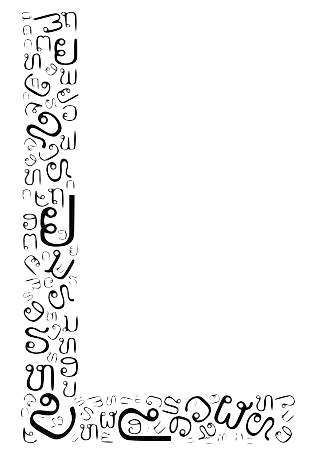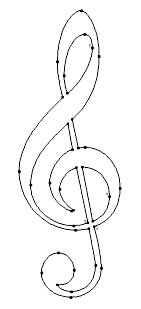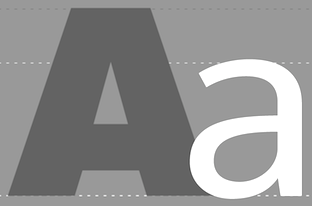TYPE DESIGN INFORMATION PAGE last updated on Fri Nov 14 12:55:34 EST 2025
FONT RECOGNITION VIA FONT MOOSE
|
|
|
|
|
Laotian fonts | ||
|
|
|
|
SWITCH TO INDEX FILE
Free Lao and Vietnamese fonts: Alice0-Lao-Normal, Alice1-Lao-Normal, Alice2-Lao-Normal, Alice3-Lao-Normal, Alice4-Lao-Normal, Alice5-Lao-Normal, Heo-May-1.1, Heo-May-Hoa-1.1, HoangYen-1.1, HoangYenH-1.1, MinhQuan-1.1, MinhQuanH-1.1, PhuongThao-1.1, PhuongThaoH-1.1, ThaHuong-1.1, ThaHuongH-1.1, UHoài-1.1, UHoàiH-1.1, alice_0-Medium, alice_1-Medium, alice_2-Medium, alice_3-Medium, alice_4-Medium, alice_5-Medium, alice_6-Medium, alice_7-Medium, ÁnhMinh-1.1, ÁnhMinhH-1.1. [Google] [More] ⦿ | |
Center for Khmer Studies (or: CKS)
|
|
At the CRCL in Bangkok, Doug Cooper offers useful pages on South-East Asian languages, including fonts for many formats. Includes the Alice font family of John Durdin and Ngakham Southichack (Lao), and several Thai (such as Dear Book Thai) and Burmese fonts (such as KannakaLex, ICMyanmar and AvaLetterKka). In addition, we find these Sanskrit fonts: Courier_CSX+-Bold, Courier_CSX+-Bold, Courier_CSX+-BoldItalic, Courier_CSX+-BoldItalic, Courier_CSX+-Italic, Courier_CSX+-Italic, Courier_CSX+, Courier_CSX+, Helvetica_CSX+-Bold, Helvetica_CSX+-Bold, Helvetica_CSX+-BoldItalic, Helvetica_CSX+-BoldItalic, Helvetica_CSX+-Italic, Helvetica_CSX+-Italic, Helvetica_CSX+, Helvetica_CSX+, NCS_CSX+-Bold, NCS_CSX+-Bold, NCS_CSX+-BoldItalic, NCS_CSX+-BoldItalic, NCS_CSX+-Italic, NCS_CSX+-Italic, NCS_CSX+, NCS_CSX+, Palatino_CSX+-Bold, Palatino_CSX+-Bold, Palatino_CSX+-BoldItalic, Palatino_CSX+-BoldItalic, Palatino_CSX+-Italic, Palatino_CSX+-Italic, Palatino_CSX+, Palatino_CSX+, Times_CSX+-Bold, Times_CSX+-BoldItalic, Times_CSX+-Italic, Times_CSX+-Roman, Times_CSX+-Roman, URWPalladioCSX+-B, URWPalladioCSX+-BI, URWPalladioCSX+-I, URWPalladioCSX+. [Google] [More] ⦿ | |
Mark Leisher's creation: "ClearlyU is a set of BDF (bitmap) 12 point, 100 dpi fonts that provides glyphs that can be used for Unicode text. The font contains over 4000 glyphs, including numerous additional glyphs for alternate forms and ligatures. The ClearlyU typeface was originally inspired by Donald Knuth's Computer Modern typeface, but has been slowly evolving into something else." Supported are: Navajo, Armenian, Cyrillic, Georgian, Greek and Coptic, Hebrew, Lao, Thai. [Google] [More] ⦿ | |
Danh Hong
| |
Daniel J. Kai
| |
Darien Valentine
| |
DejaVu Fonts
| The DejaVu fonts form an open source font family based on the Bitstream Vera Fonts. Free download. Its purpose is to provide a wider range of characters (see Current status page for more information) while maintaining the original look and feel through the process of collaborative development. Included are DejaVuSans-Bold, DejaVuSans-BoldOblique, DejaVuSans-Oblique, DejaVuSans, DejaVuSansCondensed-Bold, DejaVuSansCondensed-BoldOblique, DejaVuSansCondensed-Oblique, DejaVuSansCondensed, DejaVuSansMono-Bold, DejaVuSansMono-BoldOb, DejaVuSansMono-Oblique, DejaVuSansMono-Roman, DejaVuSerif-Bold, DejaVuSerif-BoldOblique, DejaVuSerif-Oblique, DejaVuSerif-Roman, DejaVuSerifCondensed-Bold, DejaVuSerifCondensed-BoldOblique, DejaVuSerifCondensed-Oblique, DejaVuSerifCondensed. Authors and contributors comprise Adrian Schroeter, Ben Laenen, Dafydd Harries, Danilo Segan (Cyrillic), David Jez, David Lawrence Ramsey, Denis Jacquerye, Dwayne Bailey, James Cloos, James Crippen, Keenan Pepper, Mashrab Kuvatov, Misu Moldovan (Romanian), Ognyan Kulev, Ondrej Koala Vacha, Peter Cernák, Sander Vesik, Stepán Roh (project manager; Polish), Tavmjong Bah, Valentin Stoykov, and Vasek Stodulka. The idea is to eventually cover most of unicode. Currently, this is covered: Latin (+supplement, extended A and part of extended B), IPA, Greek, Coptic, Cyrillic, Georgian, Armenian, Hebrew, N'ko, Tifinagh, Lao, Canadian aboriginal syllabics, Ogham, Arabic, math symbols, arrows, Braille, chess, and many dingbats. Alternate download site. Wiki page with download information. |
Organized font archive. Many subcategories including Party fonts, Holiday fonts, Balloons, Halloween, Christmas, screen fonts, phonetic fonts, African, Balinese, Bengali, Burmese, Cambodian, Croata-glagolitic, Cyrillic, Ethiopic, Georgian, Greek, Hebrew, Hindi, Hmong, Japanese, Javanese, Khmer, Lao, Malayan, Nepali, Nko, runes, Tamil, Vietnamese. [Google] [More] ⦿ | |
Eric Wannin
| |
Fixedsys
| Free truetype fonts: Tai Le Valentinum (for the Tai Le script used in China, Burma and Laos), Valentine Arabic, the faux pixel font Sounds of Apathy, and the unicode faux pixel font Fixedsys Excelsior 2.0 (2007). The latter covers Latin, Greek, Cyrillic, Hebrew, Armenian, Tamil, Hylian, N'Ko, Ethiopic, blackletter, Dehong Dai, Pahawh Hmong, Thaan, Arabic, Thai, Ogham, runic, and IPA. All fonts made by Darien Valentine in 2004. See also here. [Google] [More] ⦿ |
Free Lao truetype fonts: Alice_1, Alice_2, Alice_3, Alice_4, Alice_5, Anouvong, Khamthone, Khaolam, Phagnoum, Saysettha. Some original fonts by Bouphak. Alternate URL. Other fonts: Lao Muanglao, Lao samsaen, Lao Dara, Lao Sengthiene, Lao Sourigna, Lao DuangDao, Lao Dokmai, Lao Khenelao, Lao Khounlao. [Google] [More] ⦿ | |
Spanish language site for various non-Latin language fonts. A sampling: Afus Deg Wfus 2 (for Berber), AlKatib1 (2001, an Arabic typeface by Naseem Amjad), Albanian, Alice_0 (Lao typeface by by Ngakham Southichack), LAOMAY_5 CHAREUNSILP (Lao typeface by by Soupasith Bouahom), Arial AMU (1999, Armenian typeface by Ruben Tarumian), BaltFrutigerLight, BaltHelveticaMedium, BaltNewCenturySchoolbookMedium, BaltOptimaMedium, BaltTiffanyMedium, BaltUniversityMedium, CarloAtor (1997, Arabic family by Timm Erickson, Summer Institute of Linguistics), Caligraf-W, Ciula (1996, a Romanian typeface by Paul Hodor), Cursiv (Romanian), AnlongvillKhek, GabrialAtor (another Arab family by Timm Erickson), Gin, Greek (1993, by Peter J. Gentry&Andrew M. Fountain), HandSign (1993, Sam Wang), HFMassisShantNUnicode (1990-1994, an Armenian unicode typeface by BYTEC Computers and Massis Graphics), HONGKAD (1994, a family by Dr. Hongkad Souvannavong), IsmarBold, IsmarLight, Lakshmi, X000000A (1994, a lao typeface by Sith Bouahom), LAOMAY_2-CHAREUNSILP, Alice3Medium, Alice0Medium, Langagedessignes (1998, by Philippe and François Blondel), NorKirk (1997, a great Armenian typeface by Ruben Tarumian), NovaTempo (for Esperanto), Pazmaveb (for Armenian), ILPRumanianB100 (1996, by Charles J. Coker), Saysettha-Lao, Saysettha-LaoBold, SenzorgaAnhok, Timok, Tribuno, Turn-W, TimesUnicode, ArialAMU, PoliceTypeAPI (for Armenian), Cieszyn-Regular, PoojaNormal, Shibolet (1995, Hebrew), Shree-Ass-0552 (2000, by Modular InfoTech), Tudor-Semi-Lite, Webdunia, TimesNRCzech, TNRLiboriusVII (2001, a fully accented Times typeface by Libor Sztemon), GreatMoravia (2001 Libor Sztemon, Czechia), Johaansi-ye-Peyravi (2001, a full accent blackletter typeface by Libor Sztemon, Czechia), TimesNREuskaraEuransiEsperanto (2001, Libor Sztemon). [Google] [More] ⦿ | |
Glavy Fonts
| Jason Glavy, who lives in Yokohama, runs Glavy Fonts. He has created some free fonts: JG Lepcha (2001, a South asian language font), JG Chantabouli and JG Sasettha (cleaned up and extended unicode vesions of Sasettha and Chantabouli fonts created by John Durdin), JGAksaraBali, JGBasicLao, JGChamVer2, JGChamCambodia, JGChamVN, JGChantabouliLao, JGHurufJawaSanskrit, JGLaoOldArial, JGLaoOldface, JGLaoTimes, JGSoyombo (Tibetan), WL-LatinIPATimes. He used to have a bunch of Japanese fonts on his web site, including his Jindaimoji series. He also created three fonts for Makassarese/Buginese. At some point, he was associated with Saronix Japan. His Hmong page had JGCwjmemFinalVersion, JGCwjmemSecondVersion, JGCwjmemThirdVersion, JGNaadaasFinalVersion, JGNaadaasSecondVersion, JGNaadaasThirdVersion, JGPahawhFinalVersion, JGPahawhSecondVersion, JGPahawhSourceVersion, JGPahawhThirdVersion, JGPuajTxwm, all made in 2002: of these, the Pahawh series is original, while Cwjmem and Naadaas are improvements of other fonts. West African fonts designed by him: JGBassaVahHandwriting, JGBassaVahPrint, JGBete, JGKpelleA, JGKpelleB, JGNKo, JGVaiA, JGVaiB, JGVaiC. These fonts are well researched, and are based on drawings and findings by Dalby, Dr. Welmer, and Jensen. Some of Glavy's fonts for other languages: JGBasicLao, JGChamCambodia (1998), JGChamVN (1998), JGChantabouliLao, JGHurufJawaSanskrit (2001), JGLaoOldArial, JGLaoOldface, JGLaoTimes, JG Lepcha (2001), JGSoyomb (2001). See also SIL's Mingzat (2019) for the Lepcha language of South asia, wich is based on JG Lepcha. [Google] [More] ⦿ |
GNU Freefont (or: Free UCS Outline Fonts)
|
Fontspace link. Crosswire link for Free Monospaced, Free Serif and Free Sans. Download link. [Google] [More] ⦿ |
Laotian language project site where one can download Phetsarath. It was commmissioned by the Ministry of Posts and Telecommunications of the Laos government. Google Web Fonts page. [Google] [More] ⦿ | |
Jason Glavy
| |
Thai, Lao, Khmer, Karen, Burmese and Cambodian fonts. Mac and Windows. [Google] [More] ⦿ | |
Québec City-based creator (b. 1952) of the octagonal font Vegesignes (2009-2017, FontStruct). This font also appeared in 2010 at Open Font Library. It consists of almost 7,615 glyphs. Designed for: Afrikaans, Aghem, Akan, Albanian, German, Amharic, English, Western Apache, Arabic, Armenian, Asou, Assamese, Asturian, Azerbaijani, Bashkir, Bafia, Bambara, Low German, Lower Sorbian, Basque, Bassa, bemba, bena, Bengali, Belarusian, Burmese, Bodo, Bosnian, Breton, Bulgarian, Cape Verdean, Catalan, Cebuano, Chambala, Checha, Chicacha, Choctaw, Cisena, Cornish, Corsican, Mauritian Creole, Croatian, Danish, Diola-Fogny, Dogri, Douala, Dzongkha, Embou, Erzya, Spanish, Esperanto, Estonian, Ewe, Ewondo, Faroese, Filipino, Finnish, French, Friulian, West Frisian, Ga, Scottish Gaelic, Galician, Welsh, Ganda, Greek, Guarani, Gujarati, Gusii, Hausa, Upper Sorbian, Hawaiian, Hebrew, Hindi, Hungarian, Yakut, Ido, Igbo, Indonesian, Interlingua, Inuktitut, Irish, Icelandic, Italian, Javanese, jju, kabyle, kako, kalaallisut, kalendjin, kamba, kannada, kazakh, khmer, kiga, kikuyu, kinyarwanda, kyrgyz, kölsch, konkani, koyra chiini, koyraboro senni, kpellé, kurd, kurd sorani, kwasio, lakota, langi, Lao, Latvian, Lingala, Lithuanian, Lojban, Luba-katanga, Luo, Luxembourgish, Luyia, Maasai, Macedonian, Maïthili, makhuwa-meetto, makonde, malay, maldivian, malagasy, maltese, manipuri, manx, maori, mapuche, marathe, matchamé, mazanderani, meru, meta', mohawk, mongol, moundang, n'ko, nama, navajo, northern ndebele, Southern Ndebele, Dutch, Nepalese, Ngiemboon, Ngomba, Nkole, Norwegian Bokmål, Norwegian Nynorsk, Nuer, Occitan, Odia, Oromo, Ossetian, Uighur, Urdu, Uzbek, Pashto, Punjabi, Persian, Fulani, Nigerian Pidgin, Polish, Portuguese, Quechua, Romansh, Rombo, Romanian, Roundi, Russian, Rwa, Samburu, Northern Sami, Inari Sami, Samoan, Sango, Sangu, Sanskrit, Sardinian, Serbian, Shona, Sicilian, Sindhi, Slovak, Slovenian, Soga, Somali, Northern Sotho, Southern Sotho, Sundanese, Soureth, Swedish, Swiss German, Swahili, Swati, Tajik, Taita, Tamazight, Tamil, Taroko, Tasawaq, Tatar, Czech, Chechen, Chuvash, Telugu, Teso, Thai, Tibetan, Tigrigna, Tongan, Tsonga, Tswana, Turkish, Turkmen, Tyap, Ukrainian, Venda, Vietnamese, Vunjo, Walloon, Walser, Wolof, Xhosa, Yangben, Yiddish, Yoruba, Zarma, Zulu, Scripts: Arabic, Armenian, Bengali, Burmese, Korean, Cyrillic, Devanagari, Unknown script, Ethiopic, Gurmukhi, Greek, Gujarati, Hebrew, Japanese, Kannada, Khmer, Lao, Latin, N'ko, Nastaliq, Odia, Canadian Aboriginal syllabary unified, syriac, tamil, telugu, thai, thana, tibetan. Dafont link. Fontspace link. Vegesignes download. Home page. Aka Leaurend-Lavie-Hyppere (Laval) Chabon and as Joseph Rosaire Laval Frandey Leaurend Lavie Hyper Chabom. [Google] [More] ⦿ | |
The Lao font Saysettha Lao by Monotype (1992). [Google] [More] ⦿ | |
One file with several free Laotian truetype fonts: Saysettha Lao, Hollow Lao, Bubble Lao, and Chantabouli Lao, all by Monotype. [Google] [More] ⦿ | |
Minneapolis, MN-based and Rochester, NY-born designer of the rounded Lao typeface Nok (2016) and the Lao font Fohn Thohk (2016). Behance link. [Google] [More] ⦿ | |
Monotype sells fonts for the following languages: Amharic, Aksara Kaganga, Arabic, Armenian, Balinese, Burmese, Cambodian, Chinese, Coptic, Devanagari (Hindi/Marathi/Nepali), Farsi, Georgian, Glagolitic, Gujerathi, Gurmukhi (Punjabi), Hebrew, Japanese, Javanese, Jawi, Kannada, Korean, Laotian, Lontarak, Malayalam, Old Bulgarian, Oriya, Pushto, Sindhi, Sinhalese, Surat Pustaha, Syriac, Tamil, Telugu, Thai, Urdu, Vietnamese. [Google] [More] ⦿ | |
Lao fonts by Monotype: Monotype Lao, Dok Champ (Microsoft). [Google] [More] ⦿ | |
Designers of the Lao fonts Saysettha95New, Saysettha95NewBold, Saysettha95NewBoldItalic, Saysettha95NewItalic, SaysetthaTimes, SaysetthaTimesBold, SaysetthaTimesBoldItalic, SaysetthaTimesItalic in 2001. They can be downloaded here. [Google] [More] ⦿ | |
Creator of the Lao font family Alice (1992). His company was Alice Computer. [Google] [More] ⦿ | |
Designer who created the pixel grid typeface z001-rom (2008), Katerina (2010, almost LED face), Kinryu (2010), Kinryu No. 14 (2009), z001-rom_v10.4, Normal (2009, pixel face), Elektrogothic (2008, futuristic), Laurier Test (2009, serifed), Laurier No. 7 (2009, an extensive Unicode typeface that covers Latin, Greek, Cyrillic, most Indic languages, Thai, Hebrew, Lao, Tibetan, runic, Khmer, and mathematical, chess and other symbols), Kinryu No. 8 Regular (2009, an extension of Laurier towards Japanese), Clucky Duck (2008, rounded), and the double-scratch handwriting typeface Wild Freak (2008). [Google] [More] ⦿ | |
Quartet Systems
| Eric Wannin's French commercial foundry with PC and Mac fonts for all European languages, most Indic languages, Cyrillic, Vietnamese, Amharic, Inuit, Slavonic, Greek, Tibetan, Thai, Lao, Khmer, Burmese, Cri. Hieroglyphic fonts too. Free font family: EuroQuartet. These fonts have one glyph only, the Euro symbol. It has some bar code fonts too. Multilingual fonts. They cover Braille, East European languages, Turkish, Baltic, Cyrillic, Icelandic and Greek. According to the Google] [More] ⦿ |
Palakkad, Kerala-based computer scientist. He is responsible for Autonym Font (2013). He explains: A font that can render all language autonyms. If we want to show a large number of languages written in their own scripts (autonyms), we cannot apply the usual webfonts to it. This is because when each script requires a webfont, we will end up using a large number of webfonts. This can cause large bandwidth usage. An example of this use case is a language selector on a website. Autonym font tries to solve this. The font contains glyphs and opentype rules for rendering the language autonyms. And it contains only those glyphs for a language. The glyphs for the font are taken from a large number of free licensed fonts. The sources for the glyphs, by language, are:
| |
The SEALANG web site is managed by Doug Cooper / Southeast Asian Software Research Center. Documentation (PDF files) and some free fonts. Burmese, devanagari, Jawi, Lao Dhamma, Ramkhamhaeng, Tibetan, Vietnamese, Mudir Thai. [Google] [More] ⦿ | |
Vientiane, Laos-based designer (b. 1990) of the Lao / Latin typeface families SNT Anouvong (2016), Sooksun (2017) and Thongdy (2017). Dafont link. Saona Type link. [Google] [More] ⦿ | |
"The SIL Tai Dam Fonts are regular and bold versions of the traditional Tai Dam script and are closely based on handwritten letters. [...] Over half a million Tai Dam people (also known as Black Tai or Tai Noir) live in northwestern Vietnam and northern Laos. Their language is a member of the Tai-Kadai language family and is closely related to Laotian and Standard Thai. [...] Special thanks are due to Mr. Faah Baccam, whose drawings have served as the basis for the development of these fonts." These fonts, developed by J. Victor Gaultney at the Summer Institute of Linguistics, are free. [Google] [More] ⦿ | |
Designer of the free Unicode-compliant Lao font Souliyo (2013, Google Web Fonts). Google Plus link. [Google] [More] ⦿ | |
Vietnamese and Lao fonts. The Vietnamese fonts are by Cuong Bui of TriChlor. The Laotian Alice family of fonts is by Ngakham Southichack. [Google] [More] ⦿ | |
In the late 1990s, SSi used to sell foreign fonts for Arabic, Urdu, Greek, Hebrew, Armenian, Baltic, Burmese, Cherokee, Cyrillic, Cree, Simplified Chinese, Ethiopian, Inuktitut, Gaelic, IPA, Japanese, Korean, Laotian, Mayan. Farsi, Punjabi, Sanskrit, Syriac, South Arabian, Tamil, Thai, Tibetan, Turkish, Ugaritic, and Vietnamese. Plus musical dingbats. Of course, they did not make a single of these fonts themselves. [Google] [More] ⦿ | |
Stepan Roh
| |
Steve White
| |
Designer of the free Thai typeface ThSarabun New (2011, Open Font Library). A small modification of sarabun led to Khwan Sans (Open Font Library). In 2006, he designed many Thai typefaces for SIPA: Department of Intellectual Property (DIP), Ministry of Commerce and Software Industry Promotion Agency. His typeface Sarabun Mai won an award in the Thai typeface category at Granshan 2014. In 2015, he designed the modern corporate sans serif typeface family Moris at Katatrad. As part of the Noto project, he designed Noto Lao Looped and Noto Lao Loopless. In 2018, he designed Heritage Set (an elliptical sans), Bai Jamjuree (Google Fonts, Cadson Demak), Thasadith, and Fahkwang (a free Peignotian font at Google Fonts, Cadson Demak, designed by Kitti Sirirattanabunchai and Niwat Phattharowat). In 2021, he released Adelle Sans Lao at Type Together. Facebook link. BITS MMXV Conference link. Type Together link. [Google] [MyFonts] [More] ⦿ | |
David McCreedy's page on Tai Le (also known as the Liek or Dehong alphabet), which is used to write Dehong Dai in China, Myanmar, and Laos. (Dehong Dai is a language of many names, including Tai Le, Tai Nüa, Tai Mau, Tai Kong, and Chinese Shan.) [Google] [More] ⦿ | |
LaoScript font for Windows. The "exe" file has this: Alice0-95, Alice0-Lao, Alice02000, Alice0Unicode, Alice1-95, Alice1-Lao, Alice12000, Alice1Unicode, Alice2-95, Alice2-Lao, Alice22000, Alice2Unicode, Alice3-95, Alice3-Lao, Alice32000, Alice3Unicode, Alice4-95, Alice4-Lao, Alice42000, Alice4Unicode, Alice5-95, Alice5-Lao, Alice52000, Alice5Unicode, Bubble-95, Bubble-Lao, Chantabouli-95, Chantabouli-95Bold, Chantabouli-Lao, Chantabouli-LaoBold, Hollow-95, Hollow-Lao, LSWinThai, LaoSystem, LaoUnicode, Saysettha-95, Saysettha-95Bold, Saysettha-LS, Saysettha-Lao, Saysettha-LaoBold, Saysettha2000-Bold, Saysettha2000-Italic, Saysettha2000, SaysetthaISO, SaysetthaOT, SaysetthaUnicode-Bold, SaysetthaUnicode-Italic, SaysetthaUnicode, VangVieng2000-Bold, VangVieng2000-Italic, VangVieng2000, VangViengUnicode-Bold, VangViengUnicode-Italic, VangViengUnicode, XiengThong2000-Bold, XiengThong2000-Italic, XiengThong2000, XiengThongUnicode-Bold, XiengThongUnicode-Italic, XiengThongUnicode. Saysettha-LS is by Silvain Dupertuis and John M. Durdin (1997). VangVieng (2001) and XiengThong (2000) are by John Durdin. [Google] [More] ⦿ | |
Tony Pankson (Brampton, Ontario) made eight Laotian fonts, and gives them away for free. He is asking 10 dollars to help Wat Lao, so please support him. [Google] [More] ⦿ | |
About twenty Lao fonts. Truetype, type 1 and and FOT format. The truetype fonts include LaosStandard by Pierre Bouvier&Brice Muangkhot, as well as LaoBanna, LaoCaligraph, LaoPatin, LaoSquare, LaoTangdaene. [Google] [More] ⦿ | |
XenoType Technologies
| Designer of the Georgian fonts Tbilisi Text and Tbilisi Caps (1990-1994). Daniel J. Kai also has the copyright of Lao Helvetica Plain (1990-1991). [Google] [More] ⦿ |
Commercial outfit with language kits (including fonts) for these languages: Burmese, Cherokee, Inuktitut, Kannada, Lepcha, Limbu, Lontara, Malayalam, Sinhala, Telugu, Tibetan, Bassa, Cambodian, Ethiopic, Laotian, Saurashtra, Sylheti, Tai Le, Tamil, Assyrian (Syriac), Burmese, Georgian, Khmer. [Google] [More] ⦿ |
|
|
|
|


 Creators in 1999-2001 of the free Khmer fonts cks-chrieng and
Creators in 1999-2001 of the free Khmer fonts cks-chrieng and  The GNU Freefont is continuously being updated to become a large useful Unicode monster. GNU FreeFont is a free family of scalable outline fonts, suitable for general use on computers and for desktop publishing. It is Unicode-encoded for compatability with all modern operating systems. There are serif, Sans and Mono subfamilies. Also called the "Free UCS Outline Fonts", this project is part of the larger Free Software Foundation. The original head honcho was
The GNU Freefont is continuously being updated to become a large useful Unicode monster. GNU FreeFont is a free family of scalable outline fonts, suitable for general use on computers and for desktop publishing. It is Unicode-encoded for compatability with all modern operating systems. There are serif, Sans and Mono subfamilies. Also called the "Free UCS Outline Fonts", this project is part of the larger Free Software Foundation. The original head honcho was 
 Type designer born and raised in Chonburi, Thailand. Partner at the Thai type foundry Katatrad in Bangkok. He is best known for designing the widely used Thai font Sarabun, which was certified by the government of Thailand for use in all communications. An expert on extending a support for Southeast Asian minority scripts, he is the head of technical team at Cadson Demak over seeing all post production there.
Type designer born and raised in Chonburi, Thailand. Partner at the Thai type foundry Katatrad in Bangkok. He is best known for designing the widely used Thai font Sarabun, which was certified by the government of Thailand for use in all communications. An expert on extending a support for Southeast Asian minority scripts, he is the head of technical team at Cadson Demak over seeing all post production there.